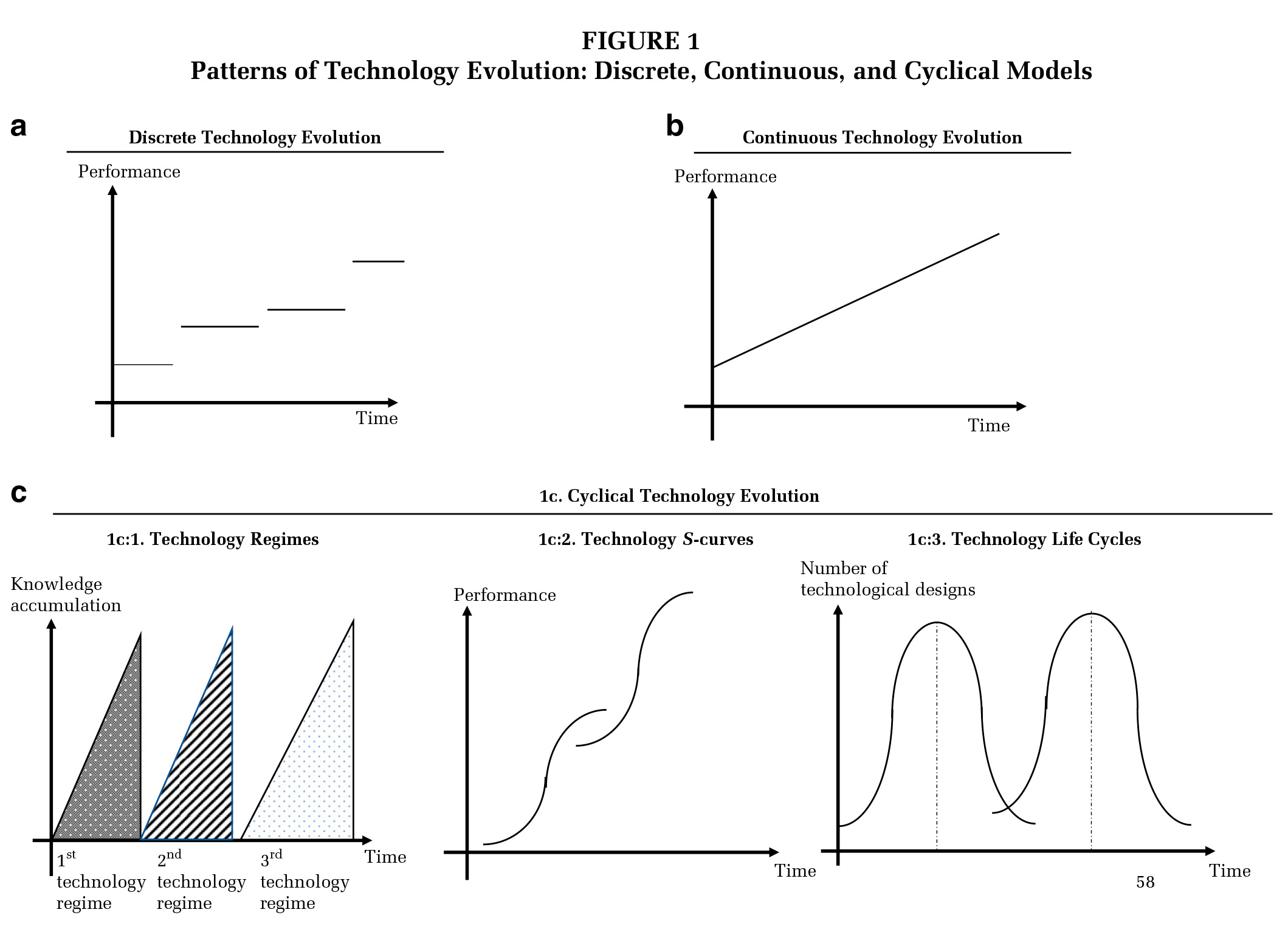Research Digest The evolution of technology: a unifying theoretical framework
In “The Evolution of Technology,” published in the Academy of Management Annals, Mia Chang-Zunino and her co-authors offer a unifying synthesis of the current knowledge about the evolution of technology.
Why study this
Technological change has a transformative effect on societies, markets, industries, organizations and individuals both as consumers and professionals. Yet the extensive body of literature about the evolution of technology remains fragmented and scattered. Knowledge has developed in separate silos, with scholars from various disciplines (management, economics, sociology, etc.) using different core assumptions about the nature of technology and the mechanisms that drive its evolution. The authors integrate the different perspectives found in the major streams of scholarship on the topic, thus offering a more complete account of technology’s evolution. This overarching framework is meant to help research advance.
Findings
- The researchers first define technology as “the incorporation of knowledge into physical artefacts that can be used to solve problems” and the evolution of technology as “the change in these artefacts over time.”
- The authors identified four main perspectives on the evolution of technology: technology-realist, economic realist, cognitive interpretivist and social constructionist.
- The technology-realist perspective holds that technical factors (like performance enhancement) drive change. This implies technological determinism, in the sense that a technology is supposed to be fixed in its applications, and its social impact will mirror its inherent material features.
- The economic perspective views economic factors such as R&D investments and economies of scale as shaping technological change. It implies a form of economic determinism, as it assumes that technological evolution is governed by the competitive dynamics of markets.
- The cognitive perspective rejects technological realism and instead focuses on transition periods and the competition between technological variations.
- The social perspective builds on the two previous ones, and takes into account social factors (network positions, power) in addition to the technology's inherent properties when exploring actors' interactions with technology.
- Scholars across all four of the above perspectives have identified the mechanisms of variation, retention and selection as drivers of technological evolution.
- Variation is the introduction of technological alternatives (e.g. the introduction of hobby-horses, high-wheelers and safety bicycles).
- Selection is the mechanism through which a subset of technological variations gains the favour of their environment (e.g. designs of bicycles including pedals and chain-propelled wheels became dominant).
- Retention is the consistent recreation and reselection of a technological variation over time (e.g. the main features of what was known as the safety bicycle were retained across the flow of technological change).
- Recombination, environmental fit, and path dependence are aggregate, cross-perspective drivers of variation, selection and retention.

Key insight
Technological, economic, cognitive and social factors shape technological evolution; to better understand technology evolution, a coevolutionary approach of these interconnected factors must be adopted.
Another important early study [belonging to the stream of research that adopted the cognitive perspective] was Tripsas and Gavetti’s (2000) study of Polaroid’s demise in the face of digital technology, which shone light on how Polaroid’s understandings of camera technology and the role of photography in the user’s life was an important source of inertia hindering Polaroid’s transition to digital technology.
Impact
The authors identify avenues for future research to better cross-pollinate the four perspectives identified in the paper. They suggest expanding current research methods to include mixed methods and archival historical analysis.
Final takeaway
The unified model of the mechanisms that drive technology evolution offers insights into how technological, economic, cognitive and social factors together shape each phase in technology evolution through recombination, environmental fit and retention.
Authors
 Stine Grodal Distinguished Professor in the department of Entrepreneurship and Innovation at Northeastern University D'Amore-McKim School of Business (US)
Stine Grodal Distinguished Professor in the department of Entrepreneurship and Innovation at Northeastern University D'Amore-McKim School of Business (US) Anders Dahl Krabbe Lecturer in Innovation and Entrepreneurship in the Strategy, International Management and Entrepreneurship Research Group at King’s Business School (UK)
Anders Dahl Krabbe Lecturer in Innovation and Entrepreneurship in the Strategy, International Management and Entrepreneurship Research Group at King’s Business School (UK) Mia Chang-Zunino Assistant Professor of Entrepreneurship at ESCP Business School (Paris campus)
Mia Chang-Zunino Assistant Professor of Entrepreneurship at ESCP Business School (Paris campus) Campuses
![© Alexandr Vasilyev - AdobeStock [copyright]](/sites/default/files/styles/event_news_une/public/2024-02/AdobeStock_Alexandr-Vasilyev.jpeg?itok=Bl_nbLV2)